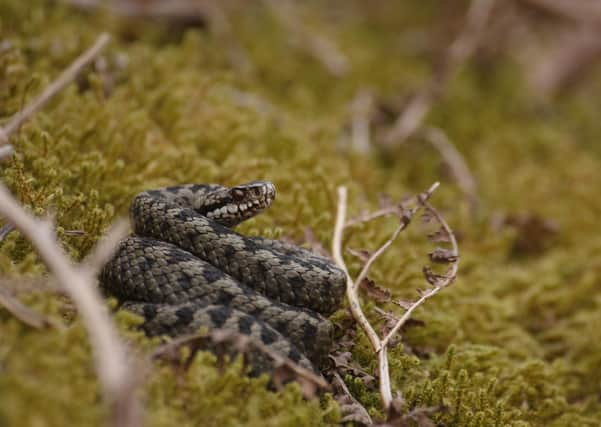Adder Watch findings to aid valued species


Adder Watch – an annual citizen science project that asks volunteers to record any adder sightings in the Area of Outstanding Natural Beauty – took place last spring and summer.
Kelly Harmer, Biodiversity Officer at the AONB, said: “If anyone remembers the weather during our survey season in April, it rained constantly.
Advertisement
Hide AdAdvertisement
Hide Ad“Throw in the existing challenges of the pandemic and lockdown, the fact we have such incredibly valuable data is a credit to our volunteers and the public who logged their sightings.”
Kelly initially raised the profile of the plight of adders on BBC Countryfile in spring.
Adders are the UK’s only venomous snake and are disappearing from the UK countryside. A recent study by Make the Adder Count indicates that 90 per cent of surveyed sites have declining adder populations.
Kelly said: “The sightings have shown locations for adders that we weren’t previously aware of.
Advertisement
Hide AdAdvertisement
Hide Ad“Knowing where they are helps us conserve them and offset any threats. Some are on sites considered for tree planting, and this data will help us direct those activities to more appropriate areas.”
Experts say that trees can damage adders’ habitat as they shade the areas in which the snakes bask.
The sightings and survey work also flagged areas where habitat conditions could be improved to bolster adder populations.
It is known that Adders like to live in moorland, heathland, open woodland glades, near old stone walls and on rocky slopes. They hibernate over winter, often in groups.
Advertisement
Hide AdAdvertisement
Hide AdIf their hibernation sites are destroyed it can have a devastating effect on the ability of the adders to survive. When they come out of hibernation, they sunbathe to build up strength. Adders can be seen typically between March and October.
Kelly said: “The new evidence has helped us identify threats, such as over-grazing. This is information we can flag to help landowners approach activities on their sites in a way that helps protect this special, and very vulnerable, species.”
Male adders are often grey with black zigzags on their backs. Females are usually brown with dark brown zigzags on their backs. They typically range from 60 to 80cm in length.
AONBs are designated in recognition of their national importance and to ensure that they are protected for all.